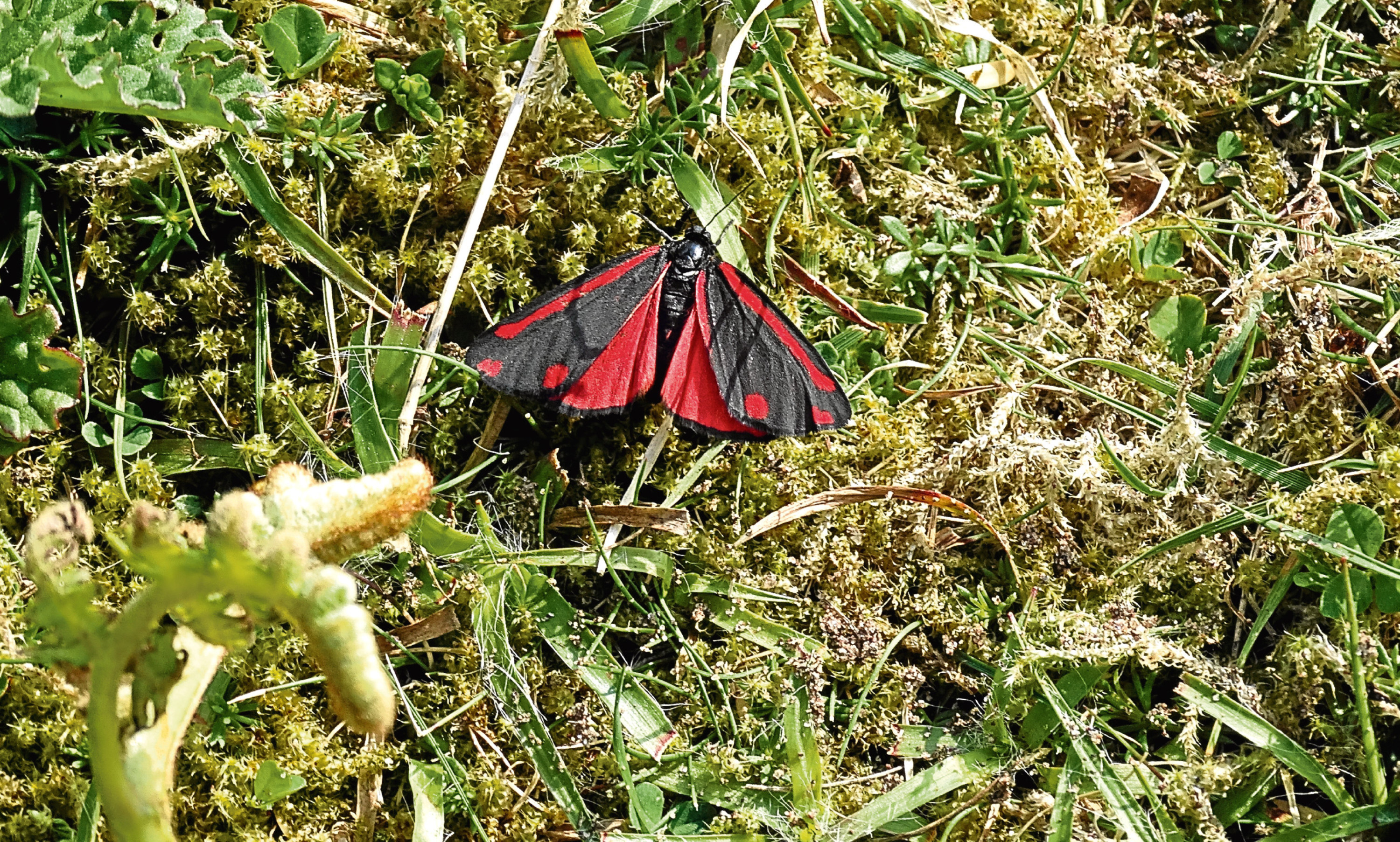I didn’t expect to see raven chicks, peregrine chicks and buzzard chicks all in the space of a quarter of a mile. But then, until last week, I’d only ever seen the adult birds.
To see this feast of birdlife I accompanied honorary warden Dave Dakers to the St Cyrus National Nature Reserve, managed by Scottish Natural Heritage.
The sea and the dunes of St Cyrus beach to the east and high volcanic cliffs protecting the reserve from the prevailing west winds and weather have created a refuge for wildlife, plants and insects that probably has nothing comparable anywhere else in Scotland.
I’ve seen ravens in Aberdeenshire but I really associate them with the west coast when we have been on holiday.
But they are expanding their breeding range eastwards.
They are the biggest member of the crow family and have a pickaxe size of a beak.
For such large birds they are impressively acrobatic in flight and you can’t mistake their guttural croaking kark, kark, kark call.
They are one of our earliest breeding birds, nesting between February and April, and I saw fledged juvenile birds rather than chicks foraging on the dunes along with the parent birds.
Dave pointed out the inaccessible ledge where their nest is, bespattered with their droppings.
The cliffs are quiet compared with my childhood memories of St Cyrus in spring time.
Then they were crowded with nesting fulmars and others wheeling over the cliff tops and gliding with outstretched wings on the wind thermals rising up the cliff face, crooning to their mates with their repetitive ek, ek, ek call.
It was tremendously hot, the sun beat down but a welcome breeze was blowing off the sea.
Inka was panting fit to bust but did not have the wit to lie down in the shade of the whins to cool off.
Daytime moth
Dave pointed out a striking red and black butterfly that I hadn’t seen before.
Little wonder, because it was a cinnabar moth.
My butterfly and moth book tells me they are mainly a night flying species but are easily disturbed during the day.
We saw about a dozen and noticed that they were attracted to the ragwort growing abundantly on the dunes.
They lay their eggs on the underside of the leaves and the caterpillars feed on the plant when they have hatched.
I thought I might stay about an hour but I was completely absorbed as we watched the peregrines and the buzzards and my hour turned into two and a half.
Raptor rapture
Buzzards are probably our commonest and most visible bird of prey but my infrequent sightings of peregrines have been of adult birds flying past me at great speed.
We didn’t see chicks being fed but I watched them – both species are balls of fluffy, white feathers initially – scrambling about their cliff-ledge nests exploring their world and exercising their wings.
Peregrines have a defiant beauty. Much the same size as a carrion crow, they have long pointed wings and tails, slate-grey backs and strongly barred white underparts.
Both sexes have a black head but the males sport a distinct black feathered moustache and, of course, they have the hooked raptor beak.
I had a truly instructive morning and it confirmed how remarkably lucky we are to have such a special wildlife asset on our doorstep.
The wardens at the reserve centre thoughtfully put out bowls of fresh water for overheated dogs and Inka gulped down several pints when we got back to the car.
Cruel nature
This week ends with a story of young life snuffed out by untimely death.
Reading my Courier, I was aware of loud bird calls apparently coming from the kitchen.
I presumed the Doyenne had opened a window and a bird was serenading me on the window ledge. The cries became more frantic and I went to investigate.
A young thrush, scarcely fledged, had hopped in the back door and managed to hop into Inka’s water bowl and could not get out.
It was calling to its parents to come and rescue it.
I picked it out of the bowl, screaming at me most ungratefully.
When I laid it on the grass it fluttered to the garden fence and I thought that was the last I would see of it.
An hour later the Doyenne called me to come and look at a wee body lying at the foot of the fence – headless. I don’t blame Inka for the deed because I’m sure he never left the house.
However, jackdaws come to feed on the peanuts I put out and I think they may have been the culprits.
Along with other members of the crow family, jackdaws include the chicks of smaller song birds in their seasonal diet, although I’ve always thought it was newly hatched and defenceless chicks.
Jackdaws don’t have a hooked raptor beak to rip off flesh and the thrush’s head would be about as much as a jackdaw could have swallowed.
Sad to us, perhaps – but nature has no time for sentimentality.
